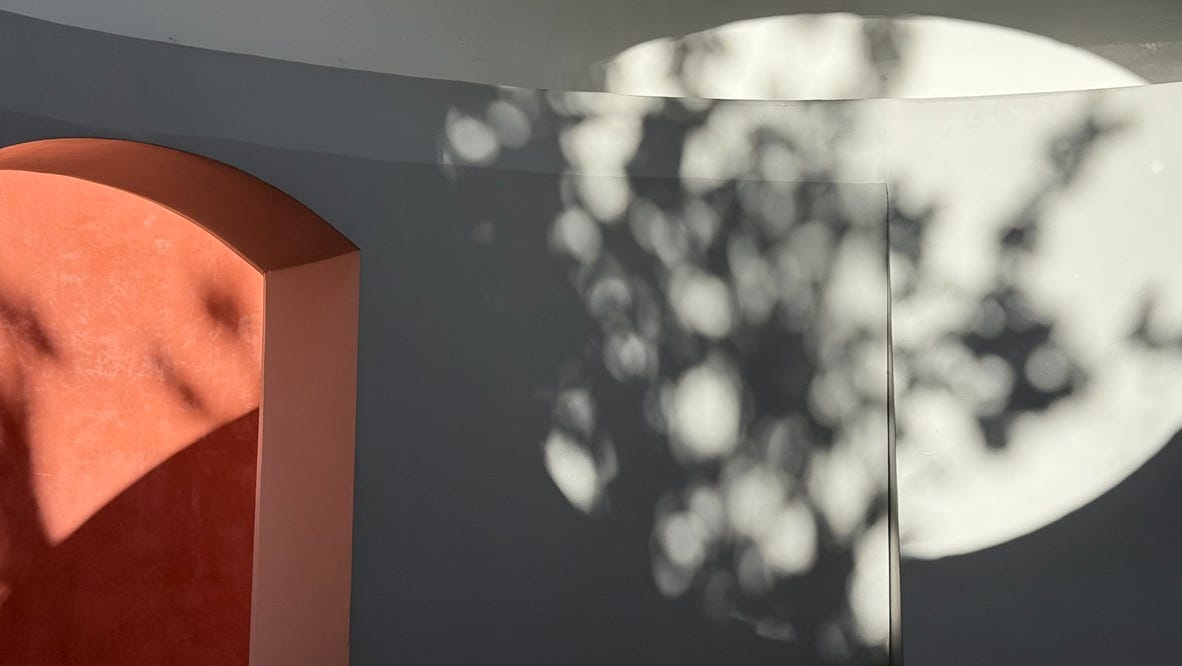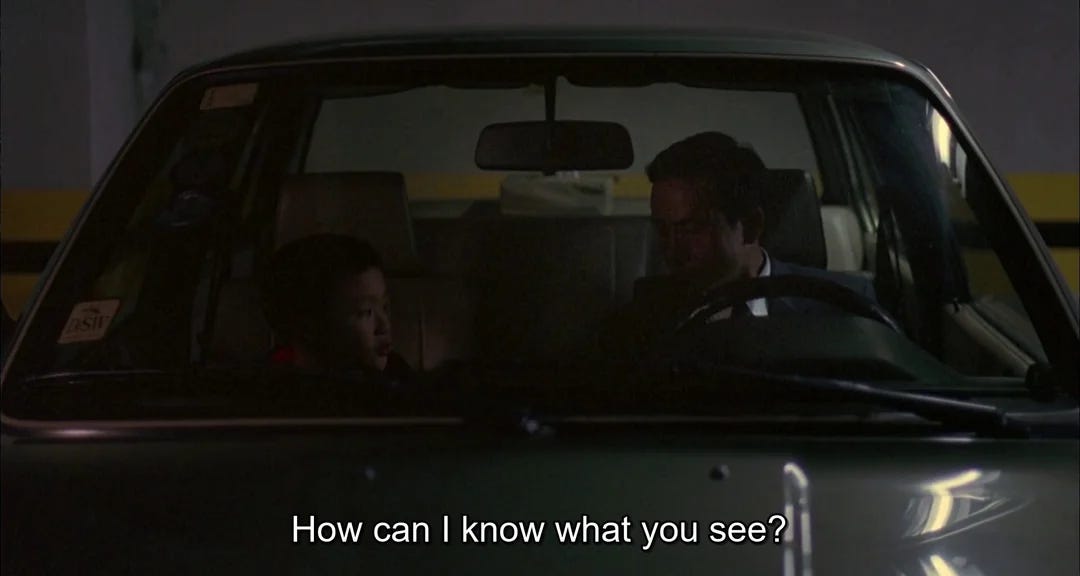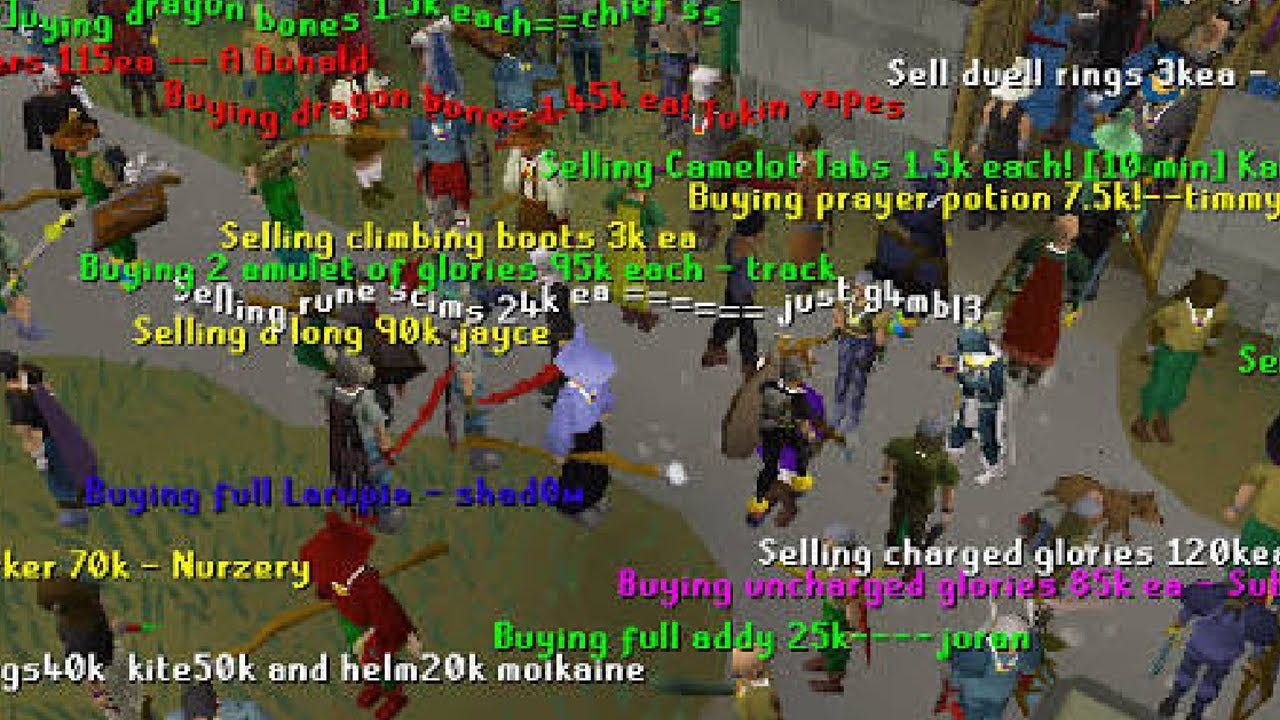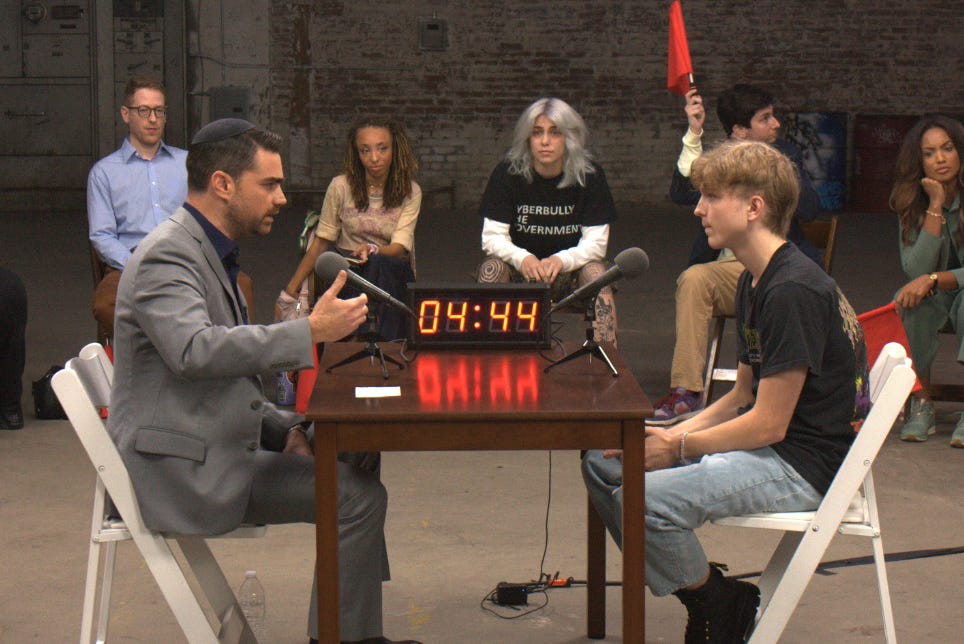A little-known gem in Golden Gate Park is the James Turrell Skyspace nestled in the back of the de Young sculpture garden. It's free and open to the public during the opening hours of the museum, and I find myself making a habit of basking inside, often by myself, watching the sky shift above me and the shadows dance. Every time I'm there, I marvel at how simple it seems, yet I find myself having a different experience each time I visit. The quality of light is different, which makes everything seem new—the shade of the sky, the atmosphere of the walls.
taken on a spring day at the Skyspace by the de Young
The beauty and effectiveness of the Skyspace lies in curation—a pinhole into the sky set against a backlit white frame turns an everyday sight into something extraordinary. In doing so, it reveals the magician's prestige: how to spot the extraordinary in everything around us. For artists and creatives who have already learned this lesson, it’s easy to apply it in everyday scenarios, to select an interesting part from the whole and focus on it. Before I learned this lesson, I was consumed with capturing the whole and getting everything. When I took photos as a kid, I tried my hardest to fit my entire field of vision—the wider the lens, the more capable I felt. To miss anything felt like I was losing something precious.
Ironically, the opposite is necessary to learn that we should cherish the beauty of little moments. We have to make a part so beautiful that we can’t help but appreciate the whole. When you visit the Skyspace, it gifts you a preciousness that resurfaces every time you look at the sky afterward.
What is the Skyspace for the Internet? How do I create a pinhole to highlight all the little human actions through technology that make me believe in the goodness of people over and over again? How do I show the extraordinary in the swipe of a finger, the tap of a key, the press of a button? How do we start seeing all the people behind those actions, hoping to meet them, believing in them, even, whenever we interact online?
a still from Yi Yi, directed by Edward Yang. A son asks his father about how we can know what each other sees, when we can only see from our own eyes.
When I reflect on personal experiences, I think about the things that have stayed with me long after they happened. I think of Perfect Days and Yi Yi, films that somehow never fail to make me cry no matter how many times I see them for how seen they make me feel. I think about encountering Sarah Sze’s work for the first time, how her sprawling sculptures took my breath away and rewired my brain for how you could think about installation.
Ultimately, what I’m interested in is the ability to widen our aperture, to bring more light in with every look at the world. I’m interested in developing the awareness mid-gaze of what we are perceiving, experimenting with new ways of looking, and planting the seed for that change to spread.
a screenshot of a typical marketplace in Runescape
I’m trying to think about the first moment that opened my eyes up to the possibility of the internet. Perhaps standing in the crowded square of Runescape with every manner of conversation floating in Comic Sans text above pixelated avatars. Something about the denseness of the text, the low fidelity aesthetic, made me realize that these were actual people. Maybe it was on twitter in 2020 as I found other people who thought like me and were interested in the same weird internet concepts. The first time I read a blog and felt it could have come straight from my brain. I don't know if art can evoke the same feeling as these fleeting, spontaneous lived experiences, but I sure hope to facilitate them in whatever I make.
It's funny that the Runescape example comes up because it houses one of my worst memories of the Internet as well. One day, I met a friendly stranger who offered me a new weapon and proposed we fight some beasts together. The area they had in mind was past the boundary of the Wilderness—an area full of precious loot, along with dangerous monsters and the ability for players to attack each other. I had never been and was scared to death, but it felt like a unique opportunity to try it out. So I put on my best armor and we headed out together. As I crossed the barrier, acknowledging the in-game prompt that described the dangers, I remember thinking: I could lose everything.
And that's exactly what happened. Only a few paces out from the barrier, my new "friend" began attacking me. I froze. I started typing in all caps incoherently, in fear, as I frantically tried to click back towards the entrance. My character fell, and the screen slowly faded to black.
Whenever I remember this experience these days, I wonder what that person is up to now. I wonder how many people they pulled this trick on, what went through their mind as they did their first time. In that moment, I'm sure we were both high on adrenaline, sharing a twisted kind of emotional intimacy.
a screenshot from Jubilee's Surrounded series that pits one person against 20 people with a different belief system
The popular curation of these kinds of experiences is to represent them as black and white—good and evil. Show these people preying on innocent victims and then create an elaborate scheme to show them a piece of their own medicine. Scamming scammers, highlight reels of dunking on supporters of any establishment figure, and even a catfish version of the Runescape story I shared. There's something incredibly satisfying about these stories. They follow the classic Western template of justice: rewarding good behavior and doling out divine punishment on the bad.
Yet they don't feel like they do anything to change the cycle. In fact, they might add fuel to the fire, turning a small battle into an all-out war.
Recently, I came across a video that shows a different view. In it, a girl shares the voicemail left by a "scammer" who is laughing and blessing her after getting tricked by her voicemail greeting in which she pretends to answer the phone. There's a subversion of the traditional scripts here. The roles of "hero" and "villain" fall away to reveal two people sharing a moment. The narrative becomes messy, real. Perhaps a scammer realizes that he is preying on innocent people. Perhaps we realize that these so-called scammers have families of their own they are trying to support, too. Or nothing changes at all. We are left to wonder with the question, to find the answers ourselves.
I have long described my goal partially as creating “useful art”. What makes something valuable to me is that it deals with how we live, in the real world, in our real lives. I'm not exactly sure how this voicemail example scales into more universal change, but it feels relatable and real. It makes me wonder about how I can reproduce this kind of deviation in my own scam calls. More importantly, just like every time I enter Skyspace, I feel my perception changing in response to it.
This dispatch was sent to 1634 inboxes. My writing is always free and open, but I am independently funded and appreciate any support you can offer. Consider sharing this with a friend and becoming a patron (or for those without Github, subscribing on Substack) for the warm & fuzzy feeling of supporting an indie artist (and access to the community & works-in-progress) .
Thank you to the 29 people who supported my independent work _with a sponsorship last month, and a warm welcome to Peter and Chris.





